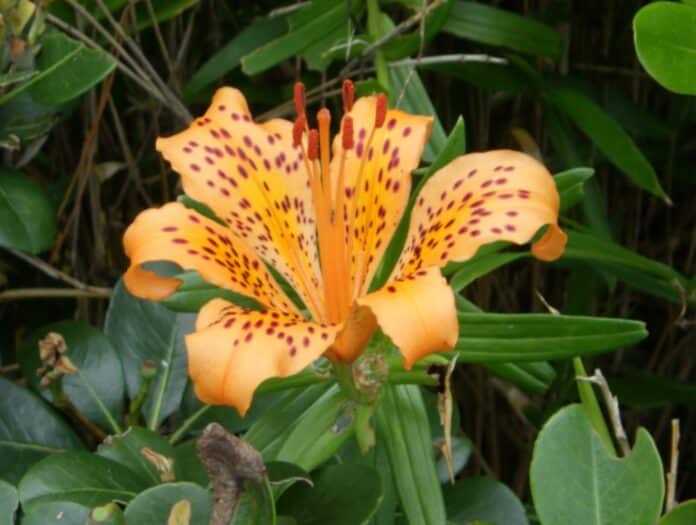A research team led by Dr. Seita Watanabe, a specially appointed assistant professor at the Botanical Gardens and the Graduate School of Science at Osaka Metropolitan University, has identified a new species of the Japanese lily known as sukashiyuri has been identified for the first time since 1914.
It is a “see-through lily, “or perhaps “openwork lily, ” which originates from the gaps between its tepals. The plant is also known as Hama yuri since it grows on the seaside, or into-yuri or iwa yuri, about its rocky habitat.
Dr. Watanabe questioned the current categorization of the sukashiyuri group, known for its orange blossoms. These lilies have been traded from Japan for almost 200 years, making them highly valuable as ornaments. Dr. Watanabe and his colleagues sought evidence to support the theory that more taxonomic groups existed than the currently recognized four.
With unwavering dedication, the research team embarked on a comprehensive journey across Japan. They meticulously examined the lilies, capturing their beauty in pictures, collecting specimens, and extracting DNA from plant components. This painstaking research has led to a revision of the traditional categorization into eight taxa, including the remarkable Lilium pacificum, the first new species of Japanese lily to be discovered in 110 years.
Dr. Watanabe said, “It has an interesting characteristic: the tips of its leaves are curved into a claw-like shape. Based on the new understanding of these eight taxonomic groups, we found that seven are endemic to Japan, each adapted to its coastal or mountainous environment, and evolving unique traits.”
Our research has unveiled the intricate processes of differentiation in these plants. We believe that our findings will serve as valuable clues for future speciation studies. The seemingly simple plants have revealed a complex world of individual differences, reminding us of the importance of morphological observation.
Journal Reference:
- Seita T. Watanabe, Kazuhiko Hayashi, Katsuro Arakawa, Shizuka Fuse, Koji Takayama, Hidetoshi Nagamasu, Minoru N. Tamura. Biosystematic studies on Lilium (Liliaceae) II. Evolutionary history and taxon recognition in the L. maculatum–L. pensylvanicum complex in Japan. Taxon. DOI: 10.1002/tax.13141
